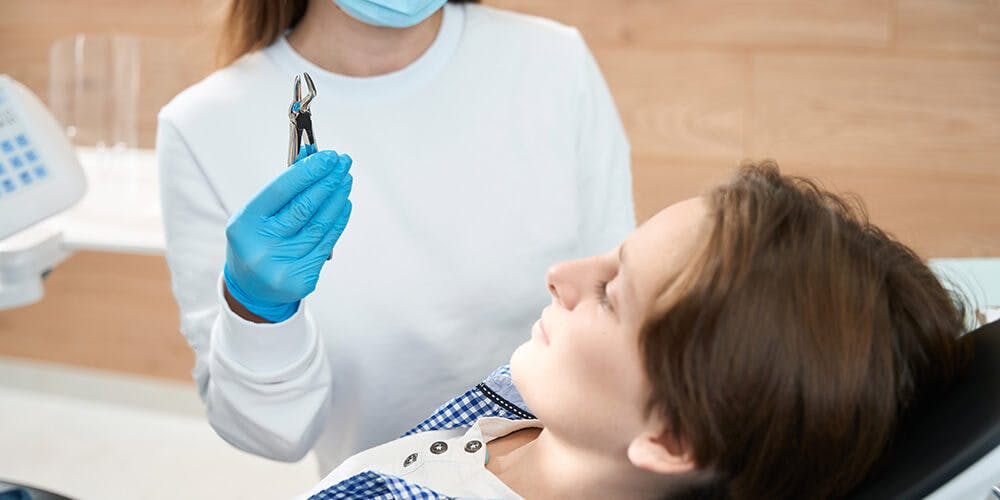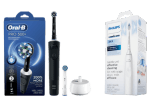Posted by Dr. Taner Cakmak on Sun, 14 Apr 2024
Kanata South Dental - Dentist Kanata

A tooth extraction is necessary in several situations:
- Severe Tooth Decay: If a tooth is extensively decayed and cannot be restored with fillings, crowns, or other treatments, extraction may be the only option to prevent further decay and infection.
- Advanced Gum Disease: When gum disease reaches an advanced stage and causes significant damage to the tooth-supporting structures (bone and ligaments), extraction may be necessary to preserve overall oral health.
- Impacted Wisdom Teeth: Wisdom teeth (third molars) often become impacted, meaning they don't fully erupt through the gums due to lack of space. Impacted wisdom teeth can lead to pain, infection, damage to adjacent teeth, and other complications, necessitating extraction.
- Orthodontic Treatment: Sometimes, orthodontic treatment plans require tooth extraction to create space for proper alignment of the remaining teeth. This is common in cases of overcrowding.
- Infection or Abscess: A severe infection or abscess in a tooth may require extraction if it cannot be effectively treated with antibiotics, root canal therapy, or other dental procedures.
- Trauma or Damage: Teeth that are severely fractured, broken, or damaged due to trauma may need to be extracted if they cannot be repaired or saved through restorative treatments.
- Impacted Baby Teeth: Occasionally, baby teeth may not fall out naturally, leading to impaction of permanent teeth. In such cases, extraction of the impacted baby teeth may be necessary to allow the permanent teeth to erupt properly.
- Preventive Reasons: In some situations, a tooth may be extracted as a preventive measure to avoid potential future problems, such as recurring infections, cyst formation, or complications during orthodontic treatment.
HOW DO YOU KNOW WHEN A TOOTH NEEDS TO BE PULLED?
Several signs and symptoms may indicate that a tooth needs to be pulled or extracted. Here are some common indicators:
- Severe Pain: Persistent or severe tooth pain can be a sign of various dental issues, including advanced decay, infection, or a damaged tooth that may require extraction.
- Swelling and Redness: Swelling, redness, or tenderness in the gums around a tooth can indicate an infection or abscess, which may necessitate extraction if not effectively treated.
- Loose Tooth: If a tooth becomes loose without any apparent cause, it could be due to gum disease, trauma, or other underlying issues that may require extraction.
- Damaged or Broken Tooth: A tooth that is significantly damaged, fractured, or broken beyond repair may need to be pulled, especially if it cannot be restored with dental crowns or other treatments.
- Impacted Wisdom Teeth Symptoms: Symptoms such as pain, swelling, difficulty opening the mouth, or pressure in the back of the mouth can indicate impacted wisdom teeth that may need extraction.
- Chronic Infections: Teeth that experience recurrent infections despite treatment, such as persistent abscesses or gum infections, may require extraction to prevent the infection from spreading or causing further complications.
- Orthodontic Needs: In some cases, orthodontic treatment plans may involve tooth extraction to address overcrowding or achieve proper alignment, as recommended by the orthodontist.
- Radiographic Findings: Dental X-rays can reveal issues such as impacted teeth, extensive decay, or root damage that may indicate the need for extraction.
If you experience any of these signs or symptoms, it's crucial to consult with a dentist for a proper diagnosis and treatment plan. They can evaluate your oral health and determine whether tooth extraction is necessary and the best course of action based on your specific situation.
IS IT BETTER TO HAVE A ROOT CANAL OR EXTRACTION?
Whether it's better to have a root canal or extraction depends on several factors, including the condition of the affected tooth, overall oral health, and individual preferences. Here are some considerations for each option:
Root Canal:
- Preservation of Natural Tooth: A root canal allows you to keep your natural tooth, which can maintain jawbone structure and prevent adjacent teeth from shifting.
- Functional Restoration: After a root canal, the tooth can function normally for biting and chewing without the need for replacement.
- Cosmetic Considerations: Root canal-treated teeth can be restored with dental crowns or fillings, preserving the appearance of your smile.
- Prevents Extraction Complications: Avoiding extraction can prevent potential complications such as adjacent teeth shifting, changes in bite alignment, and the need for tooth replacement options like dental implants or bridges.
Extraction:
- Severe Damage or Decay: If a tooth is severely damaged, decayed beyond repair, or structurally compromised, extraction may be the only viable option.
- Infection Control: Extraction can remove a source of infection or abscess, preventing it from spreading to other teeth or the surrounding tissues.
- Orthodontic Considerations: In some cases, tooth extraction is necessary for orthodontic treatment to address overcrowding and achieve proper alignment.
- Cost Considerations: In some situations, extraction followed by tooth replacement options like dental implants or bridges may be more cost-effective than a root canal and crown placement.
Ultimately, the decision between a root canal and extraction depends on factors such as the extent of damage or decay, the presence of infection, overall oral health goals, and individual preferences.
THINGS TO AVOID AFTER TOOTH EXTRACTION
After a tooth extraction, it's important to follow post-operative instructions to promote healing and prevent complications. Here are some general guidelines on things to avoid after a tooth extraction:
- Avoid Strenuous Activities: Refrain from engaging in strenuous activities, heavy lifting, or vigorous exercise for at least 24-48 hours after the extraction. These activities can increase blood flow to the extraction site and may lead to bleeding or discomfort.
- Do Not Rinse or Spit Vigorously: Avoid rinsing your mouth forcefully or spitting excessively, especially within the first 24 hours after the extraction. Gentle rinsing with saltwater or prescribed mouthwash is typically recommended after the initial healing period.
- Avoid Smoking and Tobacco Products: Smoking and using tobacco products can impair healing, increase the risk of infection, and delay the formation of a blood clot at the extraction site. It's best to avoid smoking or using tobacco during the healing process.
- Minimize Alcohol Consumption: Alcohol can interfere with the healing process and may increase the risk of bleeding or infection. Limit alcohol consumption, especially in the immediate days following the extraction.
- Avoid Hot and Spicy Foods: Hot and spicy foods can irritate the extraction site and may cause discomfort or pain. Stick to soft, cool, and bland foods during the initial healing phase.
- Do Not Use Straws: Using straws can create suction in the mouth, which can dislodge the blood clot that forms at the extraction site and lead to a condition called dry socket. Avoid using straws for drinking liquids.
- Be Gentle with Oral Care: While it's important to maintain oral hygiene, be gentle when brushing and flossing near the extraction site. Avoid brushing directly on the extraction site for the first few days, and use a soft-bristled toothbrush.
- Avoid Touching the Extraction Site: Refrain from touching the extraction site with your fingers, tongue, or any objects. Touching the area can introduce bacteria and increase the risk of infection.
- Follow Medication Instructions: If your dentist or oral surgeon prescribed medications such as painkillers or antibiotics, take them as directed. Do not skip doses or discontinue medications without consulting your healthcare provider.
- Attend Follow-up Appointments: Schedule and attend any follow-up appointments as recommended by your dentist or oral surgeon. These appointments are important for monitoring healing progress and addressing any concerns or complications.
Following these guidelines can help promote a smooth and uneventful recovery after a tooth extraction. If you have specific questions or concerns about post-extraction care, don't hesitate to contact your dental provider for guidance.
FOOD TO EAT AND TO AVOID AFTER A TOOTH EXTRACTION
After a tooth extraction, it's essential to follow a diet that promotes healing and minimizes discomfort. Here are some guidelines on foods to eat and foods to avoid after a tooth extraction:
Foods to Eat:
- Soft Foods: Choose soft and easy-to-chew foods that don't require much effort to consume. Examples include mashed potatoes, cooked vegetables, yogurt, pudding, and scrambled eggs.
- Blended Foods: Soups, smoothies, and pureed foods can be excellent options, especially in the first few days after the extraction. Ensure that soups are lukewarm, not hot, to avoid irritation.
- Cold Foods: Cold foods and beverages such as ice cream, sorbet, chilled yogurt, and cold drinks can help soothe the extraction site and reduce inflammation.
- Protein Sources: Incorporate protein-rich foods into your diet to support healing. Soft meats like shredded chicken, fish, tofu, and protein shakes can provide essential nutrients.
- Soft Fruits: Opt for soft fruits like bananas, applesauce, mashed avocado, and canned fruits without seeds or skins. Avoid acidic fruits that may irritate the extraction site.
- Dairy Products: Milk, yogurt, cheese, and other dairy products are good sources of calcium and protein, beneficial for healing and maintaining oral health.
- Whole Grains: Cooked cereals, oatmeal, soft bread, and pasta are examples of gentle whole grain options that are easy to eat after a tooth extraction.
- Hydrating Foods: Stay hydrated by consuming water, herbal teas, and diluted fruit juices. Avoid using straws, as suction can dislodge the blood clot and lead to complications.
Foods to Avoid:
- Hard and Crunchy Foods: Avoid hard and crunchy foods such as chips, nuts, popcorn, pretzels, and hard candies that can irritate the extraction site or get stuck in the socket.
- Spicy Foods: Spicy or heavily seasoned foods can be uncomfortable for the healing gums. Steer clear of hot sauces, pepper, and spices that may cause irritation.
- Acidic Foods: Acidic foods and beverages like citrus fruits, tomatoes, vinegar-based dressings, and carbonated drinks can irritate the extraction site and delay healing.
- Chewy Foods: Sticky or chewy foods like caramel, taffy, gum, and chewy candies can be difficult to chew and may stick to the surgical area, disrupting healing.
- Alcohol and Tobacco: Avoid alcohol and tobacco products, including cigarettes and chewing tobacco, as they can impair healing, increase the risk of infection, and delay recovery.
- Hot Foods and Beverages: Steer clear of hot foods and beverages, as they can cause discomfort and may interfere with the formation of a blood clot at the extraction site.
- Straws: Do not use straws for drinking liquids, as the suction can dislodge the blood clot and lead to a condition called dry socket.
NEED A TOOTH EXTRACTION AND LOOKING FOR A DENTIST NEAR YOU?
If you have severe pain and need to see a dentist in Kanata, Dr. Taner and his professional team would be happy to help you. Please call us at 613-519-1400 or email us at [email protected].
Dentist Kanata
We will gladly answer any questions you may have.
Ask QuestionsKanata South Dental offers the ability to request your dentist appointments online. Schedule an appointment now!
Book OnlineBy filling out the New Patient Forms ahead of time you will save significant time on your visit.
New Patient FormsLatest News
Veneers vs. Implants: What's the Difference and Which One is Right for You?
Fri, 17 Oct 2025If you're looking to improve your smile, you’ve probably come across two popular dental treatments: veneers and implants. While both can make a big differen...
Continue Reading